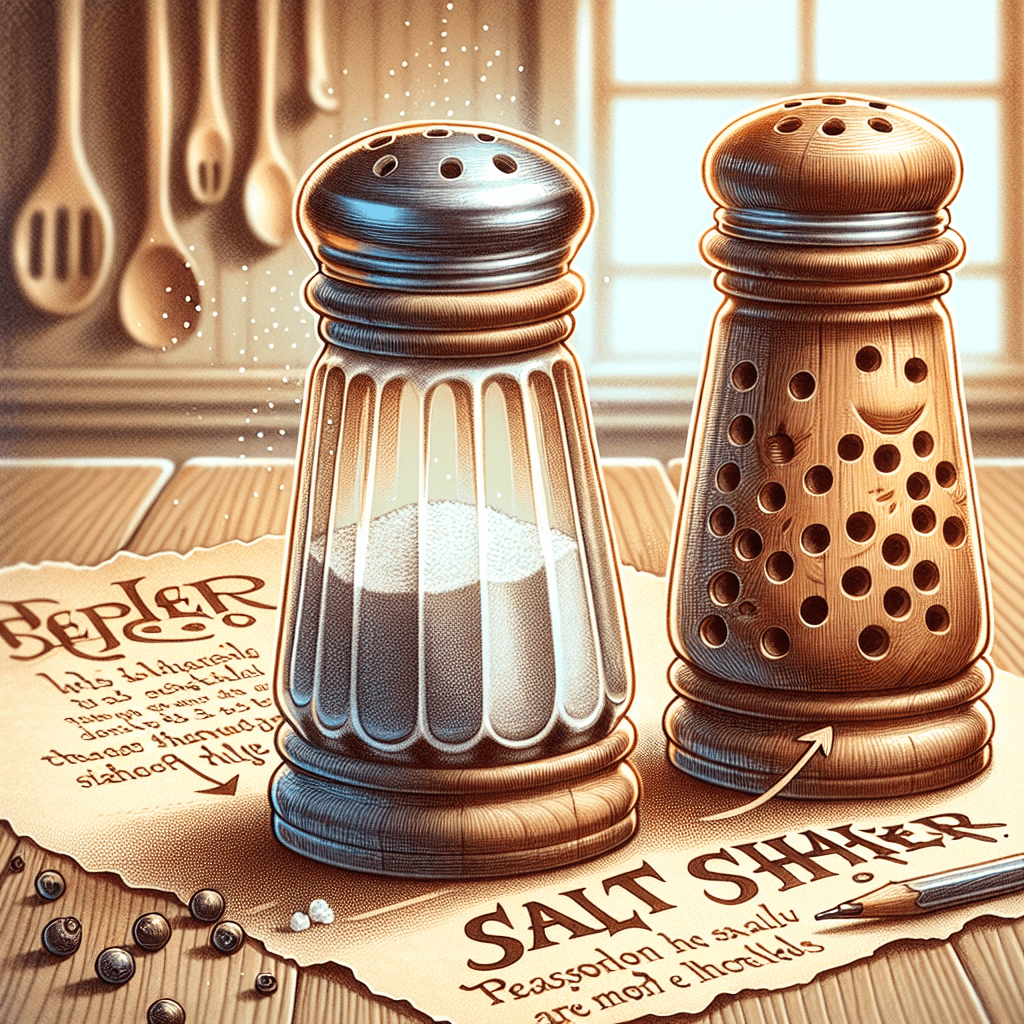Why do salt shakers typically have more holes than pepper shakers
It's a detail hiding in plain sight on every dining table, and the answer involves a fascinating mix of history, chemistry, and culinary tradition.


Too Long; Didn't Read
TLDR: Salt shakers have more holes because people use more salt, it enhances flavor, and it can clump. Pepper shakers have fewer holes for better control because pepper is a stronger spice and you need less of it.
A Salty Mystery Solved: Why Do Salt Shakers Typically Have More Holes Than Pepper Shakers?
Have you ever sat at a restaurant, waiting for your meal, and found yourself examining the salt and pepper shakers? It’s a common tabletop duo, but a closer look reveals a curious design choice: the salt shaker almost always has more holes than its peppery partner. This isn’t a random manufacturing quirk or a stylistic flourish. It's a deliberate and clever design solution rooted in the distinct physical properties of these two common seasonings.
This seemingly minor detail is a perfect example of how everyday objects are engineered to solve practical problems. In this post, we'll uncover the scientific and practical reasons behind this design standard, exploring everything from molecular properties to flavor potency. By the end, you'll have a new appreciation for the thoughtful design sitting right on your dining table.
It's All About the Flow: The Science of Salt
The primary reason for the salt shaker's hole-y design comes down to one key property: salt is hygroscopic. This means it readily attracts and absorbs water molecules from the surrounding air. This moisture absorption is what causes table salt to clump together, especially in humid environments. If you’ve ever experienced a completely blocked salt shaker, this is the culprit.
To combat this clumping and ensure a consistent flow, designers give salt shakers more holes. Here’s why it works:
- Increased Exit Points: Multiple holes provide more opportunities for the salt crystals to find a way out, even if some holes are partially blocked by clumps.
- Smaller, Uniform Grains: Standard table salt consists of small, dense, and relatively uniform cubic crystals. They can easily pass through numerous small holes, allowing for an even and controlled sprinkle.
- Breaking Up Clumps: The act of shaking a container with multiple small perforations can help break apart minor clumps as they pass through, promoting a finer dusting of salt.
Even with the addition of anti-caking agents like calcium silicate in modern table salt, the fundamental tendency to clump remains, making the multi-hole design a timeless and effective solution.
A Pinch of Pepper: Potency and Particle Size
Pepper, on the other hand, presents a completely different set of challenges and requirements, leading to its shaker having fewer, and often larger, holes.
The design is influenced by two main factors:
- Particle Size: Black pepper is made by grinding dried peppercorns. This process results in flakes that are significantly larger, coarser, and more irregular in shape and size compared to salt crystals. Fewer, larger holes are necessary to allow these bigger particles to pass through without constantly clogging the shaker.
- Flavor Potency: Pepper has a much stronger and more pungent flavor profile than salt. The goal when seasoning with pepper is often to add a controlled "pinch" rather than a widespread dusting. Fewer holes help moderate the flow, reducing the risk of accidentally overpowering a dish with a single, vigorous shake. You want to control the amount of pepper you dispense, and a shaker with one, two, or three holes achieves this perfectly.
The Design in Summary: Salt vs. Pepper
| Feature | Salt | Pepper | | :--- | :--- | :--- | | Primary Property | Hygroscopic (absorbs moisture and clumps) | Large, irregular particle size | | Flavor Profile | Enhancer, used more liberally | Potent and pungent, used with more control | | Dispensing Goal | Even, consistent dusting | Controlled, measured "pinch" | | Resulting Design | More, smaller holes to ensure flow | Fewer, larger holes for particle passage and control |
It’s a classic case of form following function. The design of each shaker is tailored to overcome the challenges and complement the characteristics of the condiment it holds.
Conclusion
The difference between a salt and a pepper shaker is more than just a matter of tradition; it's a subtle yet brilliant piece of functional design. The greater number of holes in a salt shaker is a direct response to salt's tendency to clump, ensuring it flows freely. Conversely, the fewer holes in a pepper shaker accommodate its larger flakes and give you greater control over its potent flavor.
So, the next time you reach for the salt or pepper, take a moment to appreciate the thoughtful engineering behind these humble kitchen tools. This simple observation reveals a world of science and practicality hidden in plain sight, proving that even the most ordinary objects can have an interesting story to tell.
More Articles

Why do movie punches sound so much crunchier and louder than real ones?
That sickening, bone-crunching punch you hear in the movies is a lie, and the secret ingredient is probably sitting in your refrigerator right now.

What makes a beer bottle suddenly foam over just from a light tap on top?
It’s not magic, it’s a shockwave; discover the explosive physics that turns a gentle tap on your beer bottle into an instant foamy geyser.

Why do police officers touch the back of a car during a traffic stop?
It’s not a random habit; that simple touch is a calculated, old-school tactic designed to leave a crucial and potentially life-saving piece of evidence behind.